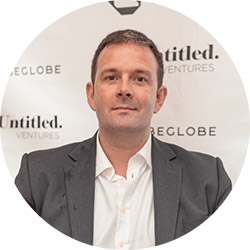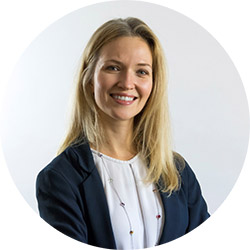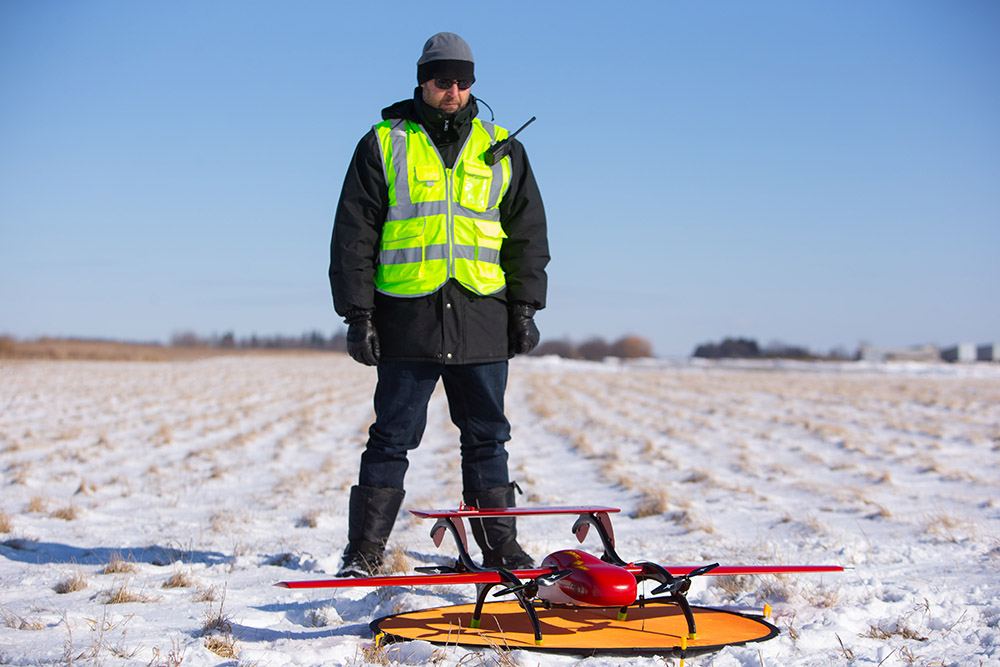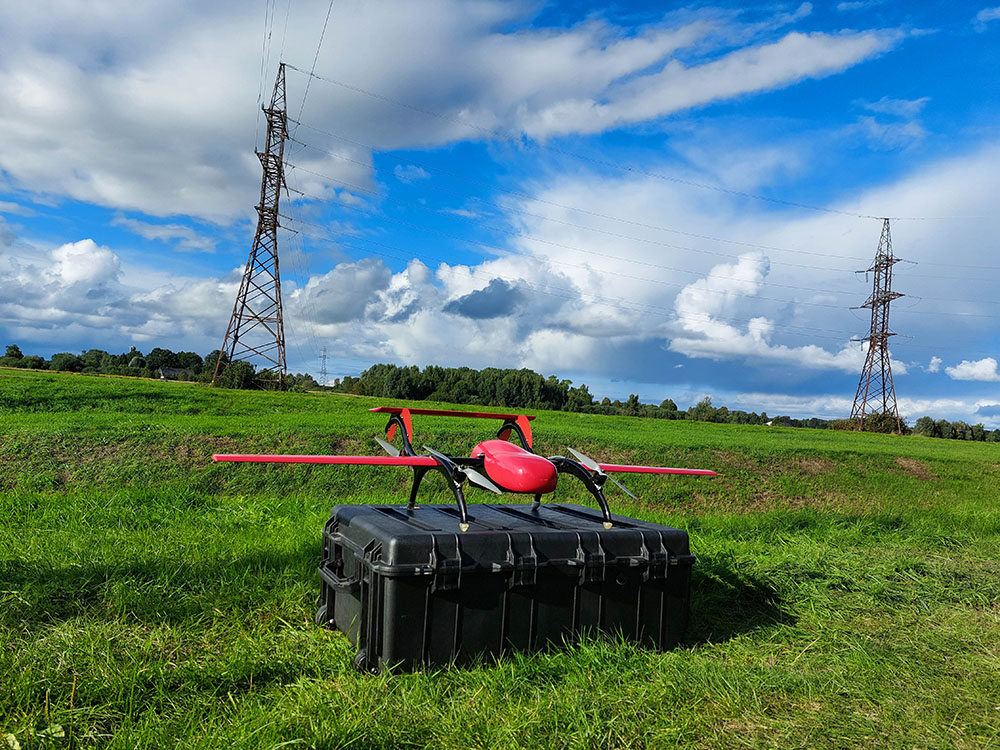We’ve explored why the commercial viability of drone technology is so attractive to Venture Capital (VC) stakeholders of all types, with many focused on what strategy is ultimately going to "win" in the drone space to unlock the true potential of the technology. With so many changes to the industry and the entire global economy, is this sort of investment or strategy riskier or more ill advised than it may have been in the past?
Untitled Ventures doesn’t believe that is the case and their recent investment in deep tech startups, one of which is FIXAR Global, proves it. The drone industry is just one of the sectors that Untitled is focused on but their commitment to it is connected to finding a “rising star” with FIXAR. That status is evident with FIXAR VTOL drones that are capable of cruise speeds of up to 65-72 km/h with the ability to travel up to 60 km on a single charge.
 Oskar Stachowiak, Untitled Ventures managing partner, has talked about what the opportunity in the drone sector means to Untitled while Yulia Druzhnikova, as the Co-founder and Director of Global Expansion for FIXAR, has laid the groundwork for these opportunities. We caught up with both of them to explore why the drone space continues to compel VC investment,
Oskar Stachowiak, Untitled Ventures managing partner, has talked about what the opportunity in the drone sector means to Untitled while Yulia Druzhnikova, as the Co-founder and Director of Global Expansion for FIXAR, has laid the groundwork for these opportunities. We caught up with both of them to explore why the drone space continues to compel VC investment,
Commercial UAV News: Yulia, maybe we can start with you and you can give us a quick sense of what FIXAR is and how your technology fits into the market.
 Yulia Druzhnikova: FIXAR stands for fixed angle rotors, which is the core technology that literally powers everything we do. Our commercial drones combine the best characteristics of heavy-duty quadcopters and fixed-wing UAVs.
Yulia Druzhnikova: FIXAR stands for fixed angle rotors, which is the core technology that literally powers everything we do. Our commercial drones combine the best characteristics of heavy-duty quadcopters and fixed-wing UAVs.
To clarify though, we’re not hardware company, as we are not focused on the manufacturing of drone technology. Our story stems from seeing a problem on the market related to the inefficiencies of drone technology. We wanted to improve the situation which compelled us to come up with a our proprietary autopilot system and ground control station. And that's how we perform almost twice as better as any other platform. Drone operators can save a ton of time and money with our solutions when compared to the other existing solutions.
Commercial UAV News: And Oscar, I imagine that made FIXAR particularly attractive when it came to finding ambitious tech startups but is there anything about drone technology that makes it particularly attractive to VCs and angel investors?
Oskar Stachowiak: If you go back a few years you’ll see that there were a lot of different investments in this sector by both VCs and angel investors. Looking at all of that through the prism of the Gartner Hype Cycle, those were investments on the way to the peak of inflated expectations and very much in the hype cycle. We’re definitely past that hype state but what made it attractive then and now isn’t measurable different.
Being past that hype, what we see now is that the market does go in a little bit down but not in terms of the funding itself, but in terms of the selections. So the market is getting more professional and investors are getting more professional and markets and the clients as well. In many ways, that makes the investment more attractive, because specific industrial applications are the segments where we work and they require very specific solutions to solve the very specific problems. That’s really what stood out to us about how FIXAR could meet and exceed established performance characteristics. And that's how the business angels and VCs got attracted to drone technology to begin with and why it continues to compel investment.
Commercial UAV News: So these investments are ultimately focused on the performance characteristics of drone technology in specific applications?
Oskar Stachowiak: Yes, but it’s really the scalability of the product and the scalability of the business model that get traction from the from the investors.
Numerous drone companies they provide the solutions for the very narrow niches, such as, for example, last mile delivery. From our perspective, at some point in the near future, those solutions are going to be far more complete, enabling them to make those deliveries while also performing an inspection or supporting an emergency situation. That type of variety of application is what’s possible with FIXAR solutions, thanks to the swappable payload module. Drone operators now can simply switch it and change it and use it for different applications that increase the efficiency of their business. That's a scalable product and model that we believe in on every level.
Commercial UAV News: You’ve obviously made a commitment to this sector but we’ve seen other VCs step back from it and others completely abandon it. Why have we seen this shift and what does it mean for startups like FIXAR?
Yulia Druzhnikova: I see a huge lack of venture capital investing in drone in industry. That includes many VCs that previously invested in drones who changed their focus. We’ve talked with these stakeholders and some of them explained that they shifted because of the regulation, which didn’t move as fast as they planned. Some have other reasons but the lack of venture capital funding available for drone startups is a problem. It’s something that I hope that will change with the regulation becoming more flexible.
Oskar Stachowiak: From our perspective, we missed the first wave of the investment into the drone technology. Quite often, bing involved in that first wave is essential, because it means you’re there on the ground floor but in this case, given the deep regulatory issues with drone technology, that first wave had more challenges than most, leading to those shifts.
Coming in when we did with FIXAR was purposeful because it was after this first wave. One of the main reasons we did is because we saw it as a deep-tech solution, meaning that if one business model does not work, that technology can be used for something else.

Commercial UAV News: So, with all this in mind, what should companies in the drone industry really understand about VC funding and angel investments? How you get funding and kind of like that? What do you wish these businesses knew?
Yulia Druzhnikova: Ultimately, the fundraising process is a sales process. But instead of selling a product, you’re selling an asset. In our case, our main assets were our patented technologies and our IP portfolio along with our product roadmap that we had to deliver to the market. That proved how we can deliver with limited resources and what opportunities would be opened up for us and our investor at the next level.
When a company in the drone industry starts fundraising, they need to concentrate on those who have some expertise in this industry. They should also remember that they shouldn’t be looking for an investor but on trying to find the right partner. Networking is the most powerful tool that someone can use as part of this process and so much takes place at industry events, and you never know who you’re going to meet in those settings. It all about the communication and telling your story and selling your vision. It’s about conveying the passion about what you do.
Commercial UAV News: Beyond that kind of foundational commitment, is it safe to say that that a VC or investor is looking for a certain set of parameters or to check certain boxes?
Yulia Druzhnikova: Absolutely.
Normally, what investors pay attention to is how your IP is protected and what type of IP you have. In our case, regulatory approvals were also part of that box-checking exercise, which pertained to the countries where we can operate as permitted by entities like the FAA and Transport Canada. We’re actually the first European company to receive permission to operate BVLOS in Canada and we’re one of the few companies to have this type of approval in Canada, which is huge.
Scalability of the product and the business model is also part of this kind of box-checking exercise. And there are baseline question about sales numbers and revenue too. How have you reached out to some big corporations had already conduct some negotiations for them? It's not just about the contract.
What you have to remember too is that as soon as you take that money from the investor, your main goal is to bring this this money back with as high X as possible. So that's done the goal each entrepreneur should have in mind when you talk to the VC.
Oskar Stachowiak: I agree with all of that.
What I’d add is that when it comes to our investment in FIXAR, we have been looking at a few other startups in the drone industry that also started their fundraising. One of the big differences was that FIXAR successfully closed their rounds, while the others were not able to raise even part of their round. What I also observed was that Yulia and the entire FIXAR team was proactive in terms of building relationships and never went into “waiting mode” that so many other startups settle into.
The mistake a lot of startups fall into when they pitch to investors is that they then relax and wait for the reply or feedback from the investor side. That doesn’t always happen because investors get proactive only when they are either overexcited about the particular company or there’s a short timeframe. Being proactive makes all the difference in the world and is the main reason there’s a gap between teams that are making things happen versus those that are passively waiting for something.
Commercial UAV News: We love that advice to drone companies but is being proactive enough? As we talked about, many VC and angel investors are no longer focused on the drone industry so how do we attract this kind of funding to the industry? How do we communicate the opportunities with drone technology that might not be realized next year but can pay off in the long term?
Yulia Druzhnikova: When we were first looking for investment, almost all of our conversations started with some educational background about the drone industry. Many were just collecting information from the different market players how the industry works, so we wanted to support that efforts. I’d encourage anyone in that same situation to support that kind of effort as best they can.
For realizing those long term opportunities, it really comes down to a technology that can reduce reducing costs and saving time by 50%, no matter the industry or application. That’s efficiency you can create whether you’re talking about pipeline monitoring, progress updates on a construction site, agriculture applications, etc. Some investors don’t understand this scale and are focused on an investment in mining or specifically in construction or wherever else. I’m sure those opportunities are there but a focus on single application just doesn’t have that kind of long-term payoff.
Commercial UAV News: What’s also different is that you had that validation. You also had that proof when it comes to creating value in these different applications.
Yulia Druzhnikova: Exactly. We are excited, honored and proud of our use case where a FIXAR team performed aerial photography at an altitude of 4000 meters over the peaks in Mount Elbrus. The purpose of the project was to create an accurate map using orthophoto as part of geodesic surveys for the construction of a Cable car in mountainous terrain while performing a total autonomous flight. None of the existing UAV solutions can perform autonomous missions in this setting, which highlights the value that we’ve establish and can now build upon.
Commercial UAV News: That speaks to certain solutions being more worthwhile to invest in than others and where the drone industry is at in the Gartner Hype Cycle chart. Oskar, what can you say about where we are with where we should be as an industry?
Oskar Stachowiak: My background is as a stock picker when I ran one of the largest European funds in London. Certain stocks wouldn’t deliver as expected but we knew the value would be there in the long run. In the venture world, it doesn't actually work like this.
Much of that is because of the people that are involved in this space, which is why I like to categorize it in terms of waiting for the right team. Ultimately, these are startups, not mature companies. They require the right individuals to make things happen. FIXAR was the right team for us, but are we too early to come into the market? That was secondary to having the right team and being ready for the upcoming regulatory cycle. That's just how we viewed it. I can't speak for others in terms of compelling investment in this sector.
Yulia Druzhnikova: What I’ll add to that is that we know Untitled decision-making doesn’t depend on the temporary hype of the market. When we were talking with them, we knew they were specifically looking at our metrics and team and would decide accordingly. That made a difference, because we talked with numerous companies that talked about commitment and dedication to this sector and our technology but never backed it up. It speaks to whom you’re partnering with and what you’re both trying to do.
Commercial UAV News: It’s really essential, because it’s not just about looking at money as a way to fund your business but actually looking at what you’re both trying to do as a mean means to support a collaborative goal.
Yulia Druzhnikova: Yes, and that’s easy to say, but something very different to enact. It can be a very serious thing, because it’s comparable to a decision about the person you’re married to. Because you have this commitment for years. And you want to have the really nice and reliable people around you as part of that. You want to be able to share everything as part of that, which is both the successes and the struggles.
Commercial UAV News: So Oskar, our last question will be for you. Since it can be such a personal thing, what sort of parameters should a startup have in mind to present or have ready with a VC or investor? How can drone companies enable these sorts of connections?
Oskar Stachowiak: This is a secret question and a good one.
I think, frankly, it's a numbers game. You might have the perfect pitch or mandate but there’s a timing element on the VC or investor side that you’ll never be able to ascertain. So my advice is to put everything in order and keep going out there, and remember it’s a numbers game. So much depends on being at the right place at the right time, but those variables are inherently unknowable.
Beyond that, I’ll go back to something I mentioned earlier, which is about how founders need to be proactive but that’s not just about research and or pitch decks that have been making the rounds. Before the pandemic, we did in-person meetups where we gathered people together with some snacks and insightful talks, and of course, networking. And when COVID started that switched to virtual, but we then generated something like $20 million+ of deals between startups and VCs. It’s further proof of the power of these personal relationships, no matter the format.
As Yulia said, fundraising is a sales process, but you can never forget that people buy from people, not from brands or logos or websites. When people see each other and talk and communicate things, happen. Those are the connections that need to be made across the drone industry, but they’re just as applicable across any and every industry.




.png.small.400x400.png)











Comments